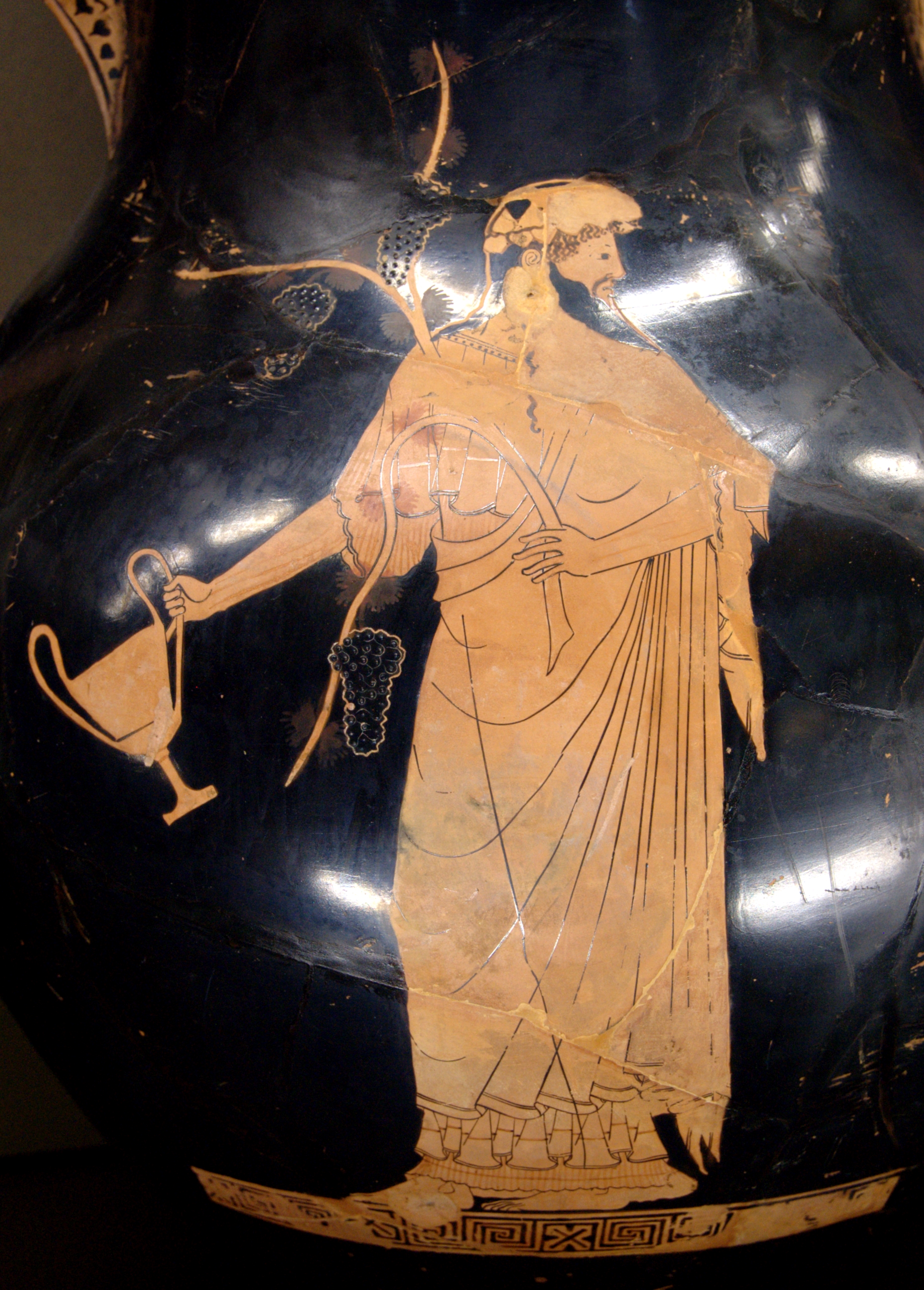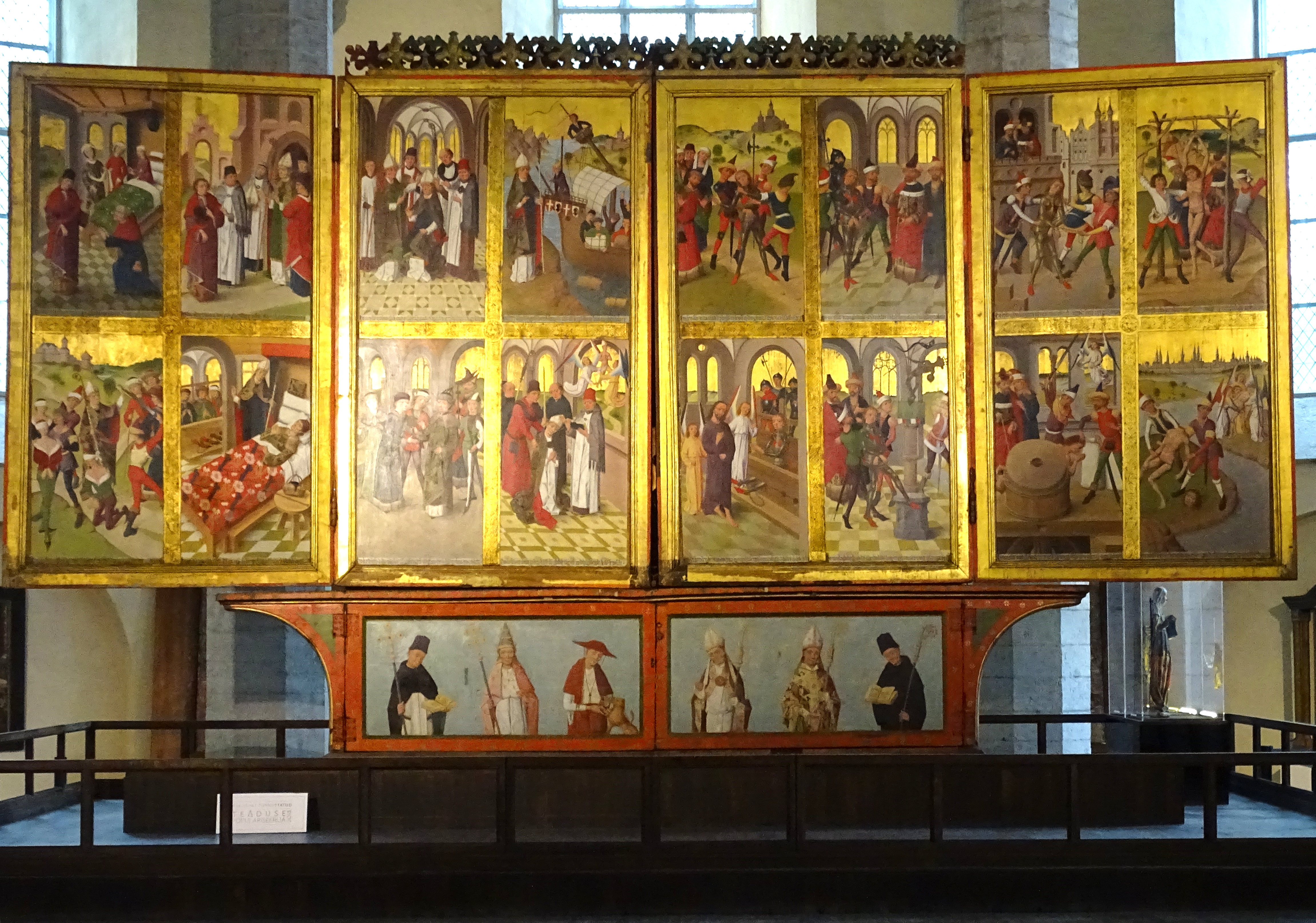|
Namepiece
In art history, a namepiece is an artwork after which an otherwise unnamed artist is named. There is a long history of giving notnames to artists whose identity has been lost. The Master of the Life of the Virgin (active c. 1463 to c. 1490) and the Master of the Legend of the Magdalen (active c. 1483 – c. 1527) both named after scenes from the Life of the Virgin attributed to them, the Master of the Prado Adoration of the Magi (active c. 1475 – 1500) named after his most famous panel, and the Vienna Master of Mary of Burgundy (c 1470 – c 1480), named after a manuscript owned by one of his patrons. The Berlin Painter (active c. 490s-c. 460s BCE) was named by Sir John Beazley for a large lidded amphora in the Antikensammlung Berlin, the Berlin Painter's ''namepiece''. Some more examples include: File:Attica, anfora con sairi ed hermes, da vulci, 500-490 ac ca. 02.JPG, Image on Berlin Painter's ''namepiece'' vase. File:Juan Dò Anuncio a los pastores.jpeg, ''Annunciation to ... [...More Info...] [...Related Items...] OR: [Wikipedia] [Google] [Baidu] |
Berlin Painter
The Berlin Painter (active c. 490–460s BC) is the conventional name given to an Attic Greek vase painters who is widely regarded as among the most talented of his time. There are no painter signatures on any of the Berlin Painter's attributed works. From the surviving vases, it is safe to assume that he was a major painter, as there are over 400 vases and fragments attributed to him. The Berlin Painter along with his apparent rival the Kleophrades Painter was educated by a member of the Pioneer Group, who introduced red-figure painting. The Berlin Painter began working in the Late Archaic style and helped develop the Classic style. Over a long career he trained many younger vase-painters, including, probably, the Achilles Painter. The majority of his works have been found across Italy. This may suggest that they were created for export to the Italian market. Many of his valued works were preserved as élite grave goods in the necropoleis of Magna Graecia and Etruria, not ... [...More Info...] [...Related Items...] OR: [Wikipedia] [Google] [Baidu] |
Notname
In art history, a (, "name of necessity" or "contingency name") is an invented name given to an artist whose identity has been lost. The practice arose from the need to give such artists and their typically untitled or generically titled works an acceptable if unsatisfactory grouping to avoid confusion when cataloging. The phrases provisional name, name of convenience, and emergency names are sometimes used to describe anonymous masters. Nonce name was at one time used. Historiography The practice of using generic names for unidentified artists is most common in the study of art of the antiquity, especially of the Roman era, and with artists of the Northern Renaissance until about 1430. Typically a pseudonym is applied after commonality is established for a grouping of works, of which a similarity of theme, style, iconography, biblical source or physical location can probably be attributed to one individual or workshop, but because of lack of surviving documentary record, the na ... [...More Info...] [...Related Items...] OR: [Wikipedia] [Google] [Baidu] |
Master Of The Brunswick Diptych
The Master of the Brunswick Diptych (fl. c. 1480-1510) was a Dutch early Renaissance painter. Life and works Nothing is known for certain about the anonymous master. Some scholars have attempted to identify the artist as Jacob van Haarlem, who is documented as having lived and worked in Haarlem from 1483 to 1509 and may have been a teacher to Jan Mostaert, but this remains a speculation. The anonymous master is named after a diptych in Brunswick, depicting Mary with an infant Jesus, Saint Anne and, opposite, a kneeling Carthusian monk and Saint Barbara. From this work, a number of other paintings have been identified as being by the same hand. The works by the Master of the Brunswick Diptych show similarities with those of Geertgen tot Sint Jans, such as the Rijksmuseum nativity, but the colours are generally lighter, his treatment of space and anatomy is less accomplished and the paintings more miniature-like. In a panel painting presently in Cologne Cologne ( ; ; ) ... [...More Info...] [...Related Items...] OR: [Wikipedia] [Google] [Baidu] |
Bruges
Bruges ( , ; ; ) is the capital and largest city of the province of West Flanders, in the Flemish Region of Belgium. It is in the northwest of the country, and is the sixth most populous city in the country. The area of the whole city amounts to more than 14,099 hectares (140.99 km2; 54.44 sq. miles), including 1,075 hectares off the coast, at Zeebrugge (from , meaning 'Bruges by the Sea'). The historic city center is a prominent World Heritage Site of UNESCO. It is oval and about 430 hectares in size. The city's total population is 117,073 (1 January 2008),Statistics Belgium; ''Population de droit par commune au 1 janvier 2008'' (excel-file) Population of all municipalities in Belgium, as of 1 January 2008. Retrieved on 19 October 2008. of who ... [...More Info...] [...Related Items...] OR: [Wikipedia] [Google] [Baidu] |
Alexian Nuns
The Alexian nuns, also called Black Sisters (, ) or Cellitines, are a Catholic religious order for women founded in the early 15th century and affiliated with the Alexian Brothers. They devoted themselves to the same corporal works of mercy as the Brothers. They wear a black habit and mantle with a white cap, whence their common name of "black sisters". Their motherhouse is in Cologne. In January 1459, Pope Pius II permitted the sisters to take the three monastic vows of poverty, chastity, and obedience and to adopt a rule. Different houses adopted different rules. Most appear to have adopted the Rule of Saint Augustine, but some in Flanders adopted the Third Rule of Saint Francis. The Alexian sisters were especially notable for the work during outbreaks of plague. They remained laywomen, since they did not pray the hours.Koen Goudriaan, ''Piety in Practice and Print: Essays on the Late Medieval Religious Landscape'' (Hilversum Verloren, 2016), pp. 137–139. Houses * * * * * ... [...More Info...] [...Related Items...] OR: [Wikipedia] [Google] [Baidu] |
Convent
A convent is an enclosed community of monks, nuns, friars or religious sisters. Alternatively, ''convent'' means the building used by the community. The term is particularly used in the Catholic Church, Lutheran churches, and the Anglican Communion. Etymology and usage The term ''convent'' derives via Old French from Latin ''conventus'', perfect participle of the verb ''convenio'', meaning "to convene, to come together". It was first used in this sense when the eremitical life began to be combined with the cenobitical. The original reference was to the gathering of mendicants who spent much of their time travelling. Technically, a monastery is a secluded community of monastics, whereas a friary or convent is a community of mendicants (which, by contrast, might be located in a city), and a canonry is a community of canons regular. The terms abbey and priory can be applied to both monasteries and canonries; an abbey is headed by an abbot, and a priory is a lesser depend ... [...More Info...] [...Related Items...] OR: [Wikipedia] [Google] [Baidu] |
Saint Ursula
Ursula (Latin for 'little she-bear') was a Romano-British virgin and martyr possibly of royal origin. She is venerated as a saint in the Roman Catholic Church, Eastern Orthodox Church and the Anglican Communion. Her feast day in the pre-1970 General Roman Calendar and in some regional calendars of the ordinary form of the Roman Rite is 21 October. History There is little information about Ursula or the anonymous group of holy virgins who accompanied her and, on an uncertain date, were killed along with her at Colonia Agrippina. They remain in the Roman Martyrology, although their commemoration does not appear in the simplified General Roman Calendar of the 1970 Missale Romanum. The earliest evidence of a cult of martyred virgins at Cologne is an inscription from in the Church of St. Ursula, located on Ursulaplatz in Cologne. This inscription commonly referred to as the Clematius Inscription states that the ancient basilica had been restored by senator Clemantius on the s ... [...More Info...] [...Related Items...] OR: [Wikipedia] [Google] [Baidu] |
Polyptych
A polyptych ( ; Greek: ''poly-'' "many" and ''ptychē'' "fold") is a work of art (usually a panel painting) which is divided into sections, or panels. Some definitions restrict "polyptych" to works with more than three sections: a diptych is a two-part work of art; a triptych is a three-part work; a ''tetraptych'' or ''quadriptych'' has four parts. The great majority of historical examples are paintings with religious subjects, but in the 20th century the format became popular again for portraits and other subjects, in painting, photography, and other media. Historically, polyptychs were panel paintings that typically displayed one "central" or "main" panel that was usually the largest; the other panels are called "side" panels, or if hinged, "wings". Folding forms were much more common north of the Alps. Sometimes, as evident in the Ghent Altarpiece and Isenheim Altarpiece, the hinged panels can be varied in arrangement to show different "views" or "openings" in the piece, ... [...More Info...] [...Related Items...] OR: [Wikipedia] [Google] [Baidu] |
Master Of The Legend Of St
Master, master's or masters may refer to: Ranks or titles In education: *Master (college), head of a college *Master's degree, a postgraduate or sometimes undergraduate degree in the specified discipline *Schoolmaster or master, presiding officer of a school In military: *Master (naval), a former naval rank *Master mariner, a licensed mariner who is qualified to be a sea captain in the merchant marine *Master or shipmaster, the sea captain of a merchant vessel * Master-at-arms, a naval police officer, often addressed as "Master" in the Royal Navy In orders and organizations: *Master craftsman, in the Medieval guilds In other: * Master (form of address), an English honorific for boys and young men *Master (judiciary), a judicial official in the courts of common law jurisdictions *Master (Peerage of Scotland), the male heir-apparent or heir-presumptive to a title in the Peerage of Scotland * Master of ceremonies, or MC (emcee), the host of an official public or private staged eve ... [...More Info...] [...Related Items...] OR: [Wikipedia] [Google] [Baidu] |
Master Of The Annunciation To The Shepherds
The Master of the Annunciation to the Shepherds was an anonymous master active in Naples, around 1620–1640. The Master's body of work was first identified by August L Mayer in the 1920s and connected to a group of works depicting the Annunciation to the Shepherds, with notable examples in Birmingham Museum and Art Gallery and the Museo di Capodimonte, Naples. Gallery File:A man playing a lute by Master of the Annunciation to the Shepherds.jpg, ''A sense of hearing, a man playing a lute'' File:Man playing a guitar by the painter Master of the Annunciation to the Shepherds.jpg, ''A man playing a guitar'' File:Adorazione dei Magi, Maestro dell'Annuncio ai pastori 001.JPG, ''Adoration of the Magi'' File:Maestro dell'annuncio ai pastori, san giovannino come il buon pastore, 1640-45 ca.jpg, ''Saint John the Baptist as the Good Shepherd'' References External links * *http://www.sothebys.com/en/auctions/ecatalogue/2013/old-master-paintings-n08952/lot.49.html *https://w ... [...More Info...] [...Related Items...] OR: [Wikipedia] [Google] [Baidu] |



